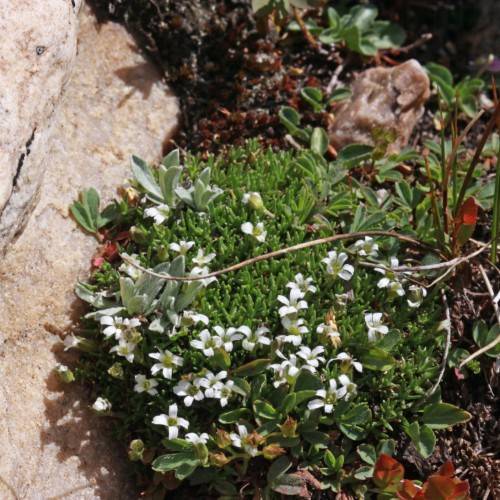
Serpentine Stitchwort
Cherleria marcescens
Watering:
Minimal
Hardiness Zone:
Sun:
full sun,part shade
Leaf:
Yes
Growth Rate:
Low
Salt Tolerant:
Yes
watering
Arctic Stitchwort should be watered regularly to help keep the soil moist. Watering should be done on a daily basis throughout the summer months, and only when the topsoil is dry in between. Since this plant is native to cold regions, it may be best to water it in the morning and in the evening to help prevent the roots from overheating. During winter it is best to water once or twice a week, or even less, since the plant does not require as much water during this time. If the soils appears damp at all, skip the watering until the soil is barely moist to ensure the plant does not get overwatered.
sunlight
Arctic Stitchwort is a plant species that thrives in arctic and subarctic climates and usually grows in rocky alpine or tundra regions. This species is adapted to extreme cold and tolerates cool, wet conditions and short periods of sun. In regards to sunlight, Arctic Stitchwort requires short periods of direct sunlight, such as found in the summer months during its growth cycle. It is recommended that Arctic Stitchwort receive around 4-7 hours of direct sunlight each day from late spring to early autumn. However, during these months, the intensity of the sun can be quite strong and can easily damage the plant, so protection in the form of shading or dappled sunlight is recommended. In winter months, Arctic Stitchwort will generally not require sunlight and should instead be left to curl up into its hibernation mode.
pruning
Arctic Stitchwort is a low-growing perennial that requires minimum maintenance but can benefit from occasionally pruning. The best time to prune Arctic Stitchwort is late spring, just before new growth begins. Prune back any flower stems that have died off or become overgrown, as well as any dead, diseased or damaged foliage. Cut the plant back by up to 1-third of its height, but don’t remove any more than half to maintain the overall shape. In terms of how much to prune, it depends on your particular plant’s growth habits. For some, it may be enough to neaten the plant by trimming back stray shoots, while for others you may want to prune it back to the base. If you’re looking to thin out the foliage, you can remove up to 1-third of the stems. When pruning Arctic Stitchwort, always make sure to use clean, sharp pruning shears and sanitation techniques to prevent disease transmission.
